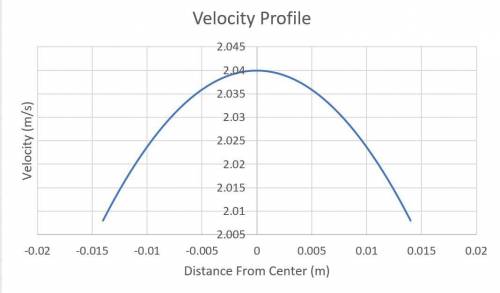
Physics, 18.03.2021 01:10 hipstersale4913
Your heart pumps blood into your aorta (diameter 2.5 cm) with a maximum flow rate of about 500 cm^3/s. Assume that blood flow in the aorta is laminar (which is not a very accurate assumption) and that blood is a Newtonian fluid with a viscosity similar to that of water.
a. Find the pressure drop per unit length along the aorta. Compare the pressure drop along a 10 cm length of aorta to atmospheric pressure (105 Pa).
b. Estimate the power required for the heart to push blood along a 10 cm length of aorta, and compare to the basal metabolic rate of 100 W.
c. Determine and sketch the velocity profile across the aorta (assuming laminar flow). What is the velocity at the center

Answers: 3
Another question on Physics

Physics, 22.06.2019 00:20
Suppose that an electromagnetic wave which is linearly polarized along the x−axis is propagating in vacuum along the z−axis. the wave is incident on a conductor which is placed at z > 0 region of the space. the conductor has conductivity σ, magnetic permeability µ and electric permittivity ε. (a) find the characteristic time for the free charge density which dissipates at the conductor. (b) write the maxwell equations and derive the wave equation for a plane wave propagating in a conductor. (c) find the attenuation distance at which the incident amplitude reduces to e ^−1 of its initial value. (d) find the electric and magnetic fields inside the conductor. 8 (e) find the power loss per area of the incident electromagnetic wave at the surface of conductor.
Answers: 1

Physics, 22.06.2019 15:30
To understand the behavior of the electric field at the surface of a conductor, and its relationship to surface charge on the conductor. a conductor is placed in an external electrostatic field. the external field is uniform before the conductor is placed within it. the conductor is completely isolated from any source of current or charge. part a: which of the following describes the electric field inside this conductor? it is in the same direction as the original external field.it is in the opposite direction from that of the original external field.it has a direction determined entirely by the charge on its surface.it is always zero. part b: the charge density inside the conductor is: 0non-zero; but uniformnon-zero; non-uniforminfinite part c: assume that at some point just outside the surface of the conductor, the electric field has magnitude e and is directed toward the surface of the conductor. what is the charge density η on the surface of the conductor at that point? express your answer in terms of e and ϵ0
Answers: 1

Physics, 22.06.2019 16:00
In which of the following is positive work done by a person on a suitcase
Answers: 1

Physics, 22.06.2019 18:30
A1000-kg car is moving at 30 m/s around a horizontal unbanked curve whose diameter is 0.20 km. what is the magnitude of the friction force required to keep the car from sliding?
Answers: 3
You know the right answer?
Your heart pumps blood into your aorta (diameter 2.5 cm) with a maximum flow rate of about 500 cm^3/...
Questions



Mathematics, 28.01.2021 18:00





Geography, 28.01.2021 18:00


Biology, 28.01.2021 18:00

Mathematics, 28.01.2021 18:00

Mathematics, 28.01.2021 18:00

English, 28.01.2021 18:00


French, 28.01.2021 18:00



English, 28.01.2021 18:00

Law, 28.01.2021 18:00



 = 10⁵ Pa, we have;
= 10⁵ Pa, we have;
 = The velocity at the center
= The velocity at the center
![v(r) = v_m \cdot \left[1 - \dfrac{r^2}{R^2} \right]](/tpl/images/1195/7598/80a86.png)
![v(r) = 2.04 - \dfrac{2.04 \cdot r^2}{0.0125^2} \right] = 2.04 - 163\cdot r^2](/tpl/images/1195/7598/e42d7.png)



